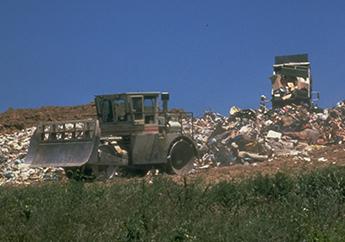How the government shutdown is impacting the U.S.
Photo courtesy of Wikimedia Commons
A sign at Muir Beach Overlook in San Francisco notifies the public that due to the government shutdown it is closed. Photo by Flickr.
At midnight on Dec. 22, 2018, the government was put under a partial shutdown because President Trump would not agree to sign the bill without receiving $5.7 billion from democrats for the wall on the U.S. – Mexico border. Senate leaders tried to renegotiate with the House of Representatives in order to pass a new spending bill but it quickly became clear that it was not going to happen. Trump’s threat to shutdown the government was then put into action and could last for weeks.
As government functions falter, an estimated 800,000 federal employees will be missing their first paycheck of 2019, and still remain to be furloughed as we crawl into the fourth week of the partial shutdown. This group of employees includes those that work to keep national parks clean. Only a third of the nations park sites are completely closed to the public, but the ones remaining open continue to be unsupervised, causing trash to be littered about along with unsanitary restrooms that overflow with human waste. Although there has been volunteers helping to clean up at several of these parks, the upkeep is difficult to manage. Not only does this hurt the environment and wildlife, but it also affects the safety of citizens.The lack of park rangers and staff is increasing risks of hikers, boaters, drivers and doers of other physical outdoor activities.
As for lower-income individuals, the chances of being evicted are increasing the longer this partial shutdown lasts. With 95 percent of the Department of Housing and Urban Development employees being furloughed, over a thousand contracts that provide money to lower-income housing residents have either been expired or unable to be renewed. People facing this situation are all subject to possible eviction. This is a damaging effect, as several of these people are seniors or people with disabilities who depend on the assistance for stable living.
Over 38 million U.S. citizens depend on food stamps and with no clear end of the shutdown established, it is said that there is enough funding for them to last through February. If the shutdown continues till March, Americans who rely on food stamps will start to go hungry. According to Vox.com, 76 percent of food stamp recipients are children, adults with low paying jobs, elderly people and the disabled. On the brighter side, organizations serving food to the lower-income population that are using state and local funding can continue to prosper. If the shutdown lasts long enough, though, it is only a matter of time that those organizations get low on funding as well.
Air travel, coast guards, tax refunds and the economy are only a few of the other commodities being affected by the now longest government shutdown in history. There are several directions this could go in order to be put to an end. But as for now, the impact on society will continue to exacerbate as long as there is no known date for the government to reopen.

Alyssa is a senior at WHS, and this is her second year on The Advocate staff and is the features editor. Outside of school, you may find her engaging in...






